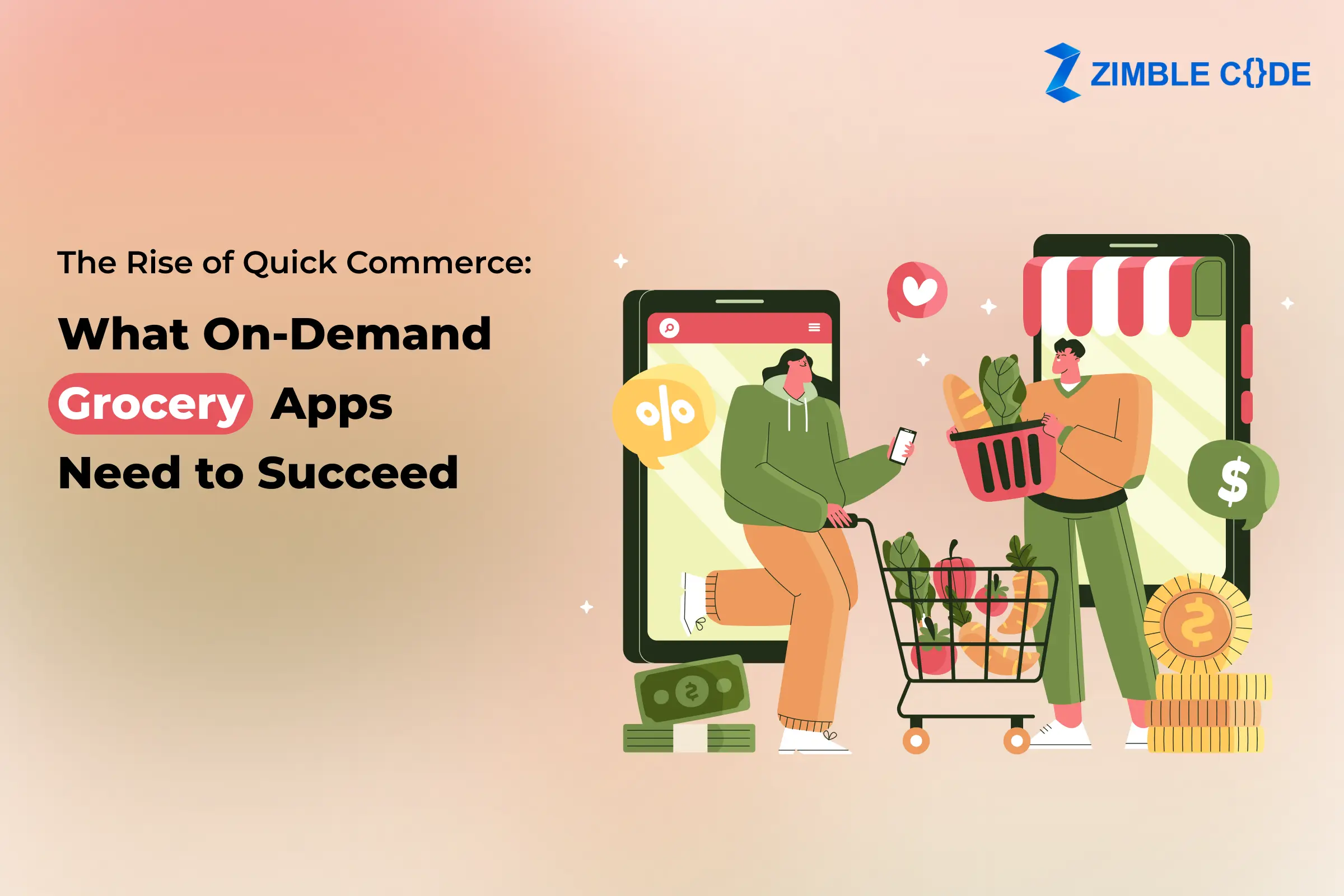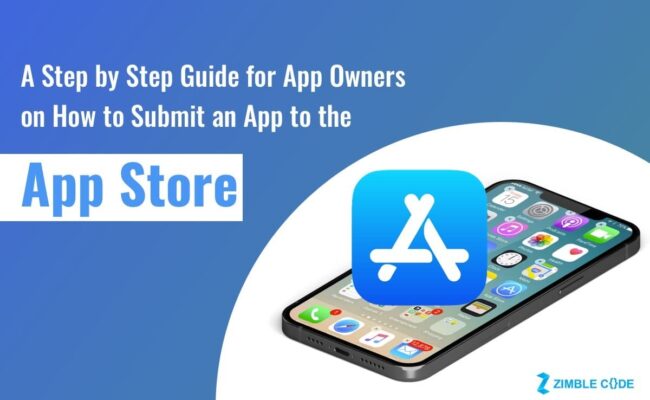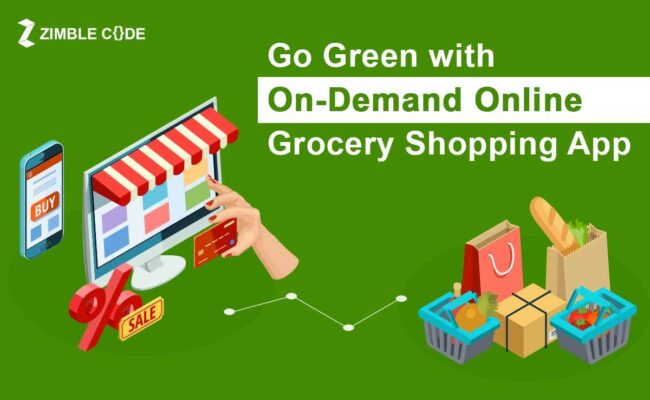Have you noticed how shopping habits in cities like Minneapolis, USA, are changing faster than ever?
With the rise of quick commerce, customers no longer want to wait hours or even days for their groceries. They expect deliveries in minutes, with speed, accuracy, and convenience at the core of their experience.
This shift has fueled the growing demand for on-demand grocery app development that is simple, reliable, and packed with smart features.
But what exactly makes such apps succeed in today’s competitive quick commerce market?
In this blog, we will explore the essential features every grocery app needs to thrive in the quick commerce era and meet rising customer expectations in Minneapolis.
Core Features for User Experience
A strong user experience makes grocery apps easy and enjoyable to use. Customers want simple designs, clear layouts, and quick responses. When the app feels effortless, shoppers spend less time searching and more time purchasing. A smooth experience builds trust and encourages repeat usage in the fast delivery market.
- Intuitive Navigation and Fast Loading
A well-structured app with clear menus and logical product categories ensures customers find what they need quickly. In fact, fast loading speeds prevent frustration and reduce the chance of abandoned carts. This feature helps users complete purchases easily and makes the platform a reliable choice in the growing instant shopping industry.
- AI-Powered Personalization
AI-based recommendations analyze shopping patterns and suggest relevant items to customers. This reduces browsing time and makes the app feel tailored to individual needs. In fact, personalized suggestions increase customer satisfaction, drive higher spending, and make shopping more enjoyable, which strengthens the platform’s competitive edge in on-demand grocery delivery services.
- Real-Time Order Tracking
Customers appreciate updates on the status of their order, as well as the expected arrival date. Real-time tracking provides clear visibility from dispatch to doorstep, alleviating concerns about potential delays. This transparency enhances confidence, fosters loyalty, and ensures that customers perceive the platform as dependable for prompt and accurate grocery delivery services.
Operational Features for Speed and Reliability
Customers expect orders to be accurate and delivered on time. Such features that enhance stock visibility, streamline delivery, and facilitate connections with multiple stores help reduce errors and delays. In fact, these functions help apps run smoothly while ensuring users enjoy dependable access to everyday essentials.
- Real-Time Inventory Updates
Connecting the app with supplier systems allows stock levels to refresh instantly. This prevents situations where users order unavailable items. As a result, the app prevents cancellations, minimizes customer frustration, and offers a reliable shopping experience by displaying accurate product availability that facilitates fast and efficient delivery services.
- Multi-Store Integration
Providing users with access to multiple local retailers through a single app creates variety and convenience. Customers can combine items from different stores in a single order, saving time and effort. This feature broadens product options, shortens delivery routes, and enhances the platform’s value in the competitive on-demand grocery space.
- Smart Delivery ETA and Geolocation
Geolocation and optimized routing allow the app to assign nearby drivers and provide precise delivery times. Customers benefit from accurate ETAs and reduced waiting periods. This improves satisfaction and ensures the app stands out as a trustworthy choice for fast and efficient grocery deliveries in today’s busy lifestyle market.
Business-Focused Features to Drive Growth
Revenue-focused features ensure businesses stay competitive while customers enjoy better deals, broader options, and more reasons to keep returning to the app. In fact, these tools added by the on-demand grocery app development company in Minneapolis foster long-term profitability by encouraging higher spending, retaining customers, and offering a wider variety of options.
- Bundling Option
Product bundling and cross-selling encourage shoppers to add complementary items during the checkout process, thereby increasing the likelihood of a sale. This increases the average order value while helping customers discover products they might need. Further, bundling creates a sense of value for buyers and generates additional revenue for businesses.
- Diverse Product Catalog
Offering groceries alongside household supplies, personal care items, and trending essentials makes the app a comprehensive shopping solution. Customers prefer a single platform that meets all their needs, rather than switching between multiple apps. This variety builds customer loyalty and positions the app as a one-stop solution for fast delivery.
- Loyalty Programs and Rewards
Rewarding repeat customers with discounts, cash back, or points makes them feel valued and appreciated. Over time, these rewards encourage frequent use and strengthen long-term loyalty. Businesses also gain insights into shopping behavior, enabling them to deliver more targeted promotions.
Advanced Features for Technology and Analytics
Technology shapes the reliability and adaptability of grocery apps. Businesses can respond quickly to user needs by using AI, data tracking, and scalable infrastructure.. These advanced tools reduce errors, enhance personalization, and enable the app to handle large customer bases with the assistance of an on-demand grocery app development company in Minneapolis, USA.
- AI and Machine Learning
Machine learning helps predict demand, suggest relevant products, and optimize stock management. Thereby, customers enjoy more accurate suggestions, while businesses run more efficiently. Such intelligent tools provide a seamless shopping experience and strengthen competitiveness in on-demand delivery platforms.
- Mobile App Analytics
Analytics tools measure customer journeys, sales performance, and app usage patterns. This data enables businesses to identify strengths, address weaknesses, and enhance customer satisfaction. In fact, on-demand grocery app developers can make timely improvements by understanding what users prefer. Therefore, analytics ensure the platform stays responsive and customer-focused.
- Cloud-Based Infrastructure
Cloud technology enables grocery apps to handle heavy traffic without experiencing crashes. It supports secure data storage, real-time updates, and easy scalability. During peak hours, the platform remains stable and responsive. In fact, cloud infrastructure ensures smooth performance, keeping customers satisfied while supporting long-term growth in ultra-fast delivery applications.
Post-Purchase Features for Customer Engagement
Customer relationships extend beyond order delivery. As a result, post-purchase features create trust, encourage ongoing use, and generate valuable insights by providing support, personalized updates, and a space for feedback. In fact, these features help transform one-time buyers into loyal customers who rely on the platform for future purchases.
- Multi-Channel Customer Support
Live chat, email, and phone support provided by an on-demand grocery app development company ensure users get quick solutions to their problems. In fact, fast assistance makes customers feel valued and reduces frustration. Therefore, reliable support services enhance trust and retention, ensuring users perceive the platform as dependable for their everyday needs.
- Personalized Communication
Sending targeted messages such as order updates, reminders, and special offers keeps users engaged with the app. In fact, customers appreciate relevant and timely notifications that enhance the value of their shopping experience. This consistent communication encourages repeat orders and strengthens brand presence in the competitive grocery delivery service industry.
- Feedback and Ratings System
Allowing customers to rate products and share experiences provides valuable insights for improvement. Positive reviews build confidence among new users, while feedback helps businesses enhance quality. A transparent rating system enhances credibility and ensures the app evolves in line with customer expectations.
Conclusion
Quick commerce is transforming the way people shop, and customers in Minneapolis expect grocery apps that are fast, reliable, and user-friendly. To meet these expectations, businesses need a platform built with the right features that enhance user experience and drive growth.
If you are ready to launch an on-demand grocery app that succeeds in this quick commerce market, ZimbleCode can help. Our team specializes in developing feature-rich, scalable, and user-friendly apps tailored to the needs of quick commerce.
Partner with ZimbleCode today and take the first step toward building an app your customers will love.
Frequently Asked Questions (FAQs)
Q1. Are local Minneapolis stores part of on-demand grocery apps?
Several apps partner with local supermarkets and specialty stores to expand options.
Q2. Which areas in Minneapolis benefit most from grocery delivery apps?
Urban neighborhoods and busy residential areas see the highest demand for quick deliveries.
Q3. Do Minneapolis grocery apps deliver essentials beyond food?
Many apps also deliver household items, personal care products, and other daily needs.
Q4. Do grocery apps in Minneapolis offer 24/7 delivery?
Some apps offer late-night or extended-hour delivery, although availability varies by location.
Meta Description










Leave A Comment